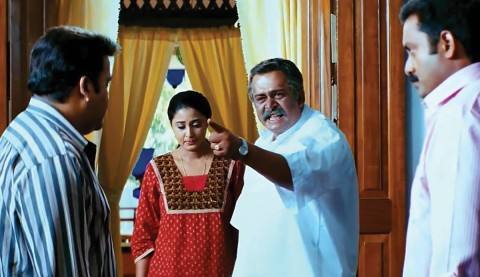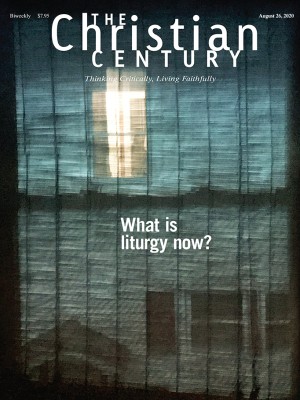Mollywood produces films portraying Christians as a normal part of the South Indian landscape
A growing number of Malayalam-language films feature Christian characters or themes.

Clearly, what we are watching is a cinematic epic about heroic early Christians and evil Romans, and the biblical settings and costumes look familiar enough. But what is that unfamiliar language they are speaking? Simple guessing will never reach the truth: this is the South Indian tongue of Malayalam, a major language of commerce and culture. It is also the medium for a booming industry of Christian films.
Malayalam is spoken by some 40 million people worldwide, and it is the dominant tongue in the province of Kerala, population 35 million. Economically, Kerala is one of India’s more prosperous states, with a literacy rate approaching 100 percent. It also has an ancient Christian tradition. Besides its Syriac-speaking nasrani or Nazarenes, there are multiple other denominations. Together, those Christians make up around a fifth of the population. A sizable Kerala Christian diaspora has its heart in the Arab Gulf states.
Read our latest issue or browse back issues.
Kerala is the center of a long-established and now booming Malayalam-language film industry, on a scale that has caused observers to speak of “Mollywood.” This is a serious moviegoing culture. Reflecting the audience, films often feature Christian characters in purely secular settings, but sometimes religious themes become explicit.
One of the most successful and widely distributed recent films was the 2011 thriller Christian Brothers, which closely resembles Bollywood productions in combining action with music and elements of soap opera. But as the title says, it is a family saga about upper middle-class nasrani, who bear such distinctive names of their faith as Anthony and Varghese. Varghese, the Syriac-Malayalam form of “George,” is always a giveaway for Christian roots in that region. Joji, one of the brothers, has been studying theology in Italy before returning to India for romantic reasons.
Many of the best-known Malayalam films use modern-day Christian settings, however discreetly. Kottayam Kunjachan (1990) is a comedy thriller with unmistakable references to local Catholic culture. Jacobinte Swargarajyam (2016, Jacob’s kingdom of heaven) portrays the difficulties of a Kerala Christian family in Dubai during the Great Recession of 2008. In no sense are these religious films, but they treat Christians as a normal and familiar part of the Indian landscape. The church context is front and center in the riotous Amen (2013), a musical “divine comedy” set in a nasrani village, complete with an apparition by St. George. The satirical plot of Romans (also 2013) concerns two criminals who all too successfully masquerade as priests in another small village.
So common are Christian characters in secular productions, occasionally in villainous or demeaning roles, as to arouse protests by Kerala Christians. As they complain, filmmakers would be nervous about portraying Hindus or Muslims in this light, for fear of provoking boycotts or worse, but Christians are safer targets.
Christian ideas penetrate into unlikely contexts. The recent blockbuster Lucifer (2019) took its name from the title applied to a main character, a mysterious international figure active in organized crime as much as in mainstream business and politics. He is connected with sinister Illuminati conspiracies, and it is difficult not to read him as an Antichrist figure. The forthcoming sequel, Empuraan, portrays him as “more than a king and less than a god.” If the biblical context is not explicit, then Christian viewers will draw the inevitable conclusions.
But Mollywood has a long record of making films with a serious or devotional intent. By no means all are Christian, and Muslim and Hindu themes are well represented, but Christian voices are often heard. As far back as 1963, Snapaka Yohannan told the story of John the Baptist, and this was a huge commercial hit.
The 1975 epic Thomasleeha portrayed the apostle Thomas, whom Kerala Christians devoutly credit as the missionary founder of their faith. Significantly, it was directed by one of the strictly mainstream directors of the period, P. A. Thomas. And naturally enough, as in all such productions, all the characters, including Christ, are played by South Indian actors—surprising to many half a century ago but now absolutely mainstream practice. Thomasleeha is certainly dated, but it still makes for fascinating watching (like so much else, it is accessible on YouTube).
Modern-day moviegoers have access to a wide range of genres, including Bible epics—some made by global denominations like the Jehovah’s Witnesses, others locally produced. There is a sizable range of evangelistic productions, often tales of healing or miracle. To take one example of many, Bakhaa (The Tears) is a pious depiction of the life of Sadhu Kochoonju Upadesi (1883–1945), a venerated Christian preacher and the composer of hundreds of hymns and devotional songs that are popular today. Avan Varum Naal imagines the rapture and serves as a local parallel to the famous American production A Thief in the Night.
Somewhere in the world, it’s a great age for Christian film.
A version of this article appears in the print edition under the title “The Christians of Mollywood.”






